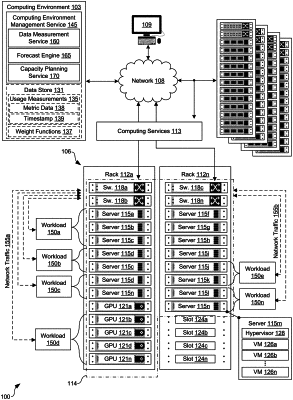| CPC G06F 11/3442 (2013.01) [G06F 9/5027 (2013.01); G06F 11/3006 (2013.01); G06F 11/3447 (2013.01); G06N 5/048 (2013.01)] | 20 Claims |

|
1. A system for transitioning usage forecasting in a computing environment, comprising:
at least one computing device comprising at least one hardware processor; and
program instructions stored in memory and executable in the at least one computing device that, when executed, direct the at least one computing device to:
forecast usage of a plurality of computing resources of the computing environment using a first forecasting data model and a plurality of usage measurements obtained from the computing resources;
transition the use of the first forecasting data model in forecasting the usage to a second forecasting data model without incurring downtime in the computing environment; and
after the transition, forecast the usage of the computing resources of the computing environment using the second forecasting data model and the usage measurements obtained from the computing resources, wherein the second forecasting data model exponentially decays the usage measurements based on a respective time period at which the usage measurements were obtained.
|